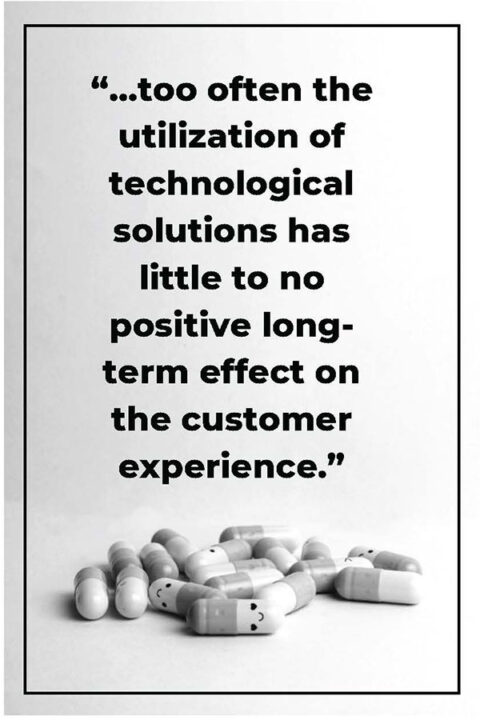The recent PWC report “Experience is everything: Here’s how to get it right” validates many of the principles leading global CX authority Lior Arussy has consistently expressed long before others spoke about them.


Almost a decade ago we used to joke and say, “A fool with a tool is still a fool.” In most cases we were referring to Voice of Customer (VOC) programs and how companies viewed VOC as being customer-focused or having a CX strategy. That same phrase still holds true, in that, some people still view a VOC as having a CX strategy. But unfortunately, too many firms have defaulted to believing a technology-based solution alone will either fix, improve or deliver exceptional customer experiences.
For many organizations, technology is an experience placebo — it makes them feel good that they are using technology, they are keeping up with the competition, they may even be patting themselves on the back as it reduces costs. But too often the utilization of technological solutions has little to no positive long-term effect on the customer experience. PWC reports that “64% of US consumers and 59% of all consumers feel that companies have lost touch with the human element of customer experience.” Further, the report states 55% of US consumers and 43% of all consumers strongly disagree that once technology becomes advanced, we won’t need people for great experiences.
In recent years we have seen a shift to DIY models, as companies further develop technology and AI. However, the importance of human interactions to support and enhance experiences will only increase. The DIY model is excellent for many types of interactions, but when the model doesn’t fit, if a link is broken or whatever the reason may be, knowledgeable, well-trained human support must always be available. And through technology, they should have up-to-date information on your customer and their issue.
Technology has the potential to be an experience super drug, but only if the technology is designed by a cross-functional team with a focus on the customer and an understanding that the customer must have the ability to easily speak with a person throughout their transaction.
Technology, just like human support, in today’s environment, cannot successfully operate in a vacuum. They need to coexist and support each other, so in combination the customer can have the best possible experience.
The CX technology challenge as quoted by PWC – “use technology with purpose to make experience feel more human – without creating frustration for customers while empowering employees” is partially accurate; for technology to become a super drug the challenge is to fuse technology with human experiences – without creating frustration for customers while empowering employees. Fusion is about understanding the customer journey, designing experiences that deliver the right level of technology and human interactions to deliver a seamless experience.
When technology is fused correctly with human interactions, employees can focus on empathy, building relationships, and delivering human experience with customers getting the best digital and human experience.